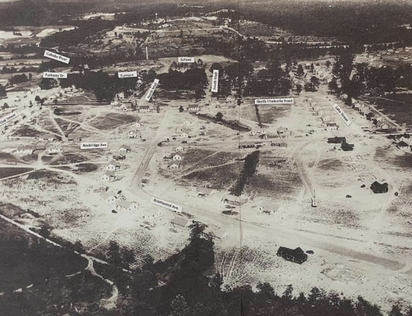Before the actual construction could take place, demolition had to be carried out. The old blast furnace was cleared away to make way for a new high school and adjacent co-operative building. Located in the center of the Project, the high school would overlook a large, grassy mall area surrounded by two-story houses. Buildings and workers’ houses from the blast furnace were also torn down in order to make room for the new suburban community. Workers from cement finishers to road builders were brought in to complete the Cahaba Project, the last and largest of the Birmingham-area government housing projects. Surprisingly, the homes of the project were built with indoor plumbing, electricity, hot and cold running water, separate garages, and other amenities common today. Large lots for the homes were the norm. Owners would be provided with room for recreational space or even the opportunity to maintain their own home gardens. Parameters were placed on income for occupants by the government. Monthly rental rates ranged from $14 to $23. The precise price was based on family size.
Before construction could be completed, applications to live in the new community poured in. The year 1938 saw the first families move into the project homes, and by early 1941, the population reached 1,000. The co-op building became the hub of the upcoming community featuring needed amenities such as a grocery, beauty shop, barbershop, filling station, and washing machines. Today, Trussville is home to almost 25,000 people. Since its beginning, the city has grown to five schools and over 100 neighborhoods, subdivisions, and developments. If only early Trussville residents could see their humble town now!
Additional Information:
Author
| Madison Feild is a junior at the University of Alabama at Birmingham. She is majoring in Anthropology and minoring in History. She is currently interning at the on-campus museum AEIVA and plans to become a collections and exhibitions manager upon graduating. She was born in Birmingham, Alabama, and enjoys reading and roller skating in her free time. |


 RSS Feed
RSS Feed